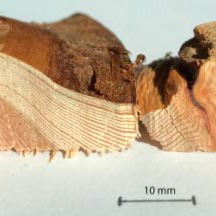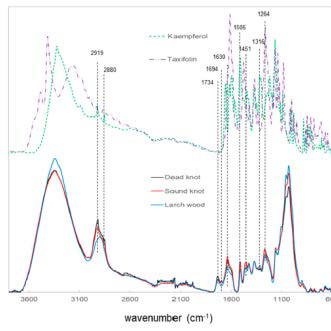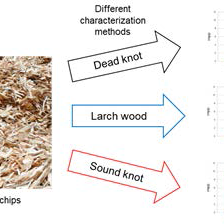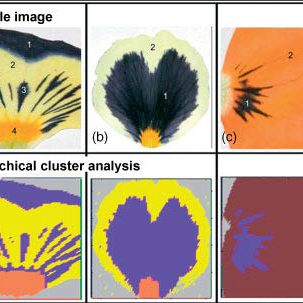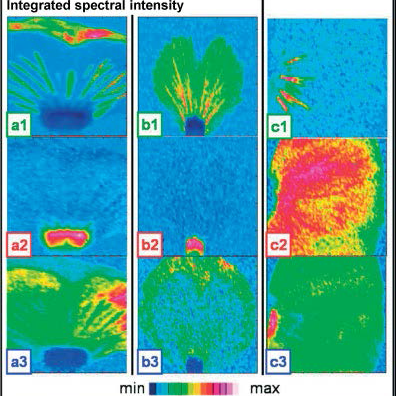Application of extraction methods for natural raw materials on laboratory scale
There are some unused natural materials (e.g. by-products), which could be used for the production of new materials and products. However, these raw materials may contain large amounts of different bio-polymers (e.g. lignans, flavonoids, stilbenes and carbohydrates), and for example, it could become a potentially valuable source of natural antioxidants.
[Ref: Wagner K, Musso M, Kain S, Willför S, Petutschnigg A, Schnabel T (2020) Larch wood residues valorization through extraction and unilization of high value-added products. Polymers 12:359; doi:10.3390/polym12020359]
Larch sound and dead knot
FT-IR spectra of different larch knotwood samples and references
Approach of this study
THE LAB
SALZBURG UNIVERSITY OF APPLIED SCIENCES – Forest Products Technology & Timber Constructions Dep.
Salzburg University of Applied Sciences participates to InCIMa4 projects with three laboratories dedicated on techniques for processing and analysing of natural raw materials (e.g. wood, straw, bark, etc).
Application of Fourier Raman Spectroscopy in the study of flavonoids and carotenoids
There has been increasing interest in flavonoids and carotenoids from plant sources in the industry of food supplements, fortified foods, nutraceutics and cosmetics because of their versatile health benefits reported in various clinical and epidemiological studies.
Flavonoids and carotenoids are shown to have antioxidative activity, mainly associated to their free-radical scavenging capacity, that is directly associated to the prevention of several morbidities and co-morbidities, including systemic inflammation, cancer, chronic diseases, metabolic alterations (such as type 2 diabetes and dyslipidemia) as well as cardiovascular and neurodegenerative diseases. Additionally, some flavonoids exhibit potential antiviral activities. Pigments present in fruits and vegetables are the main dietary sources of flavonoids and carotenoids for humans, along with chocolate, honey, tea and wine. However, their bioavailability, metabolism, and, consequently, biological activity depend upon the configuration, total number of hydroxyl groups, and substitution of functional groups close to their nuclear structure.
Fourier Raman spectroscopy has been applied to analyze plant constituents, including the pigments responsible for colors of different colored flower petals of pansy cultivars (Viola x wittrockiana) with the objective to investigate how far that technique is a potential method for in-situ discrimination of flavonoids and carotenoids occurring in flowers. For the analysis intact and differently colored flower petals were used.
Fourier Raman spectroscopy results showed successfully the discrimination between the distribution of various pigments in flower petals, offering a future possibility to progress in the chemical and structural characterization of such elements for their use in food and cosmetic industry.
[Ref: DOI 10.1002/jrs.2860]
Chemical Mapping that shows the presence of flavonoids and carotenoids and their relative concentration
THE LAB
UNIVERSITY OF SALZBURG – Department of Chemistry and Physics of Materials
RAMAN SPECTROSCOPY LAB
Raman spectroscopy is a non-destructive vibrational spectroscopic method based on the interaction of light with the electron shell.

